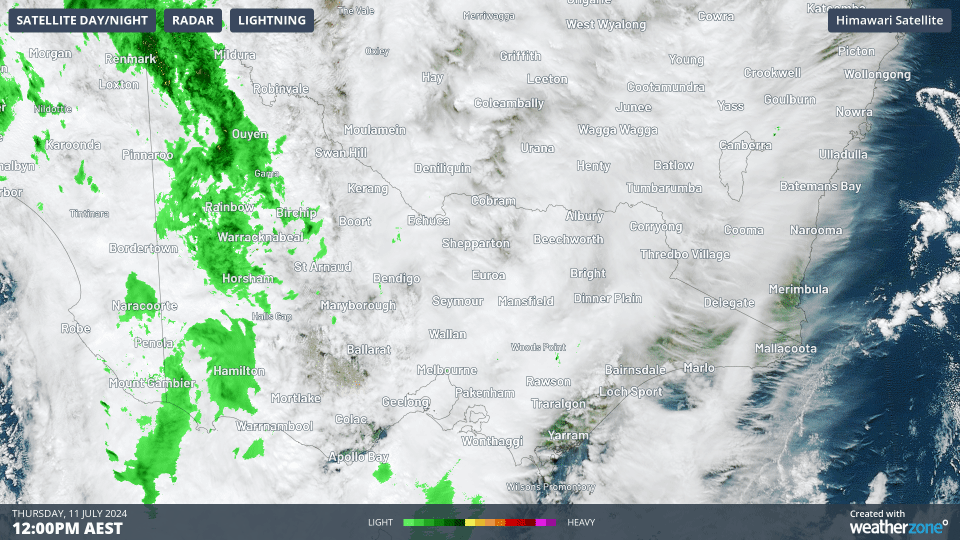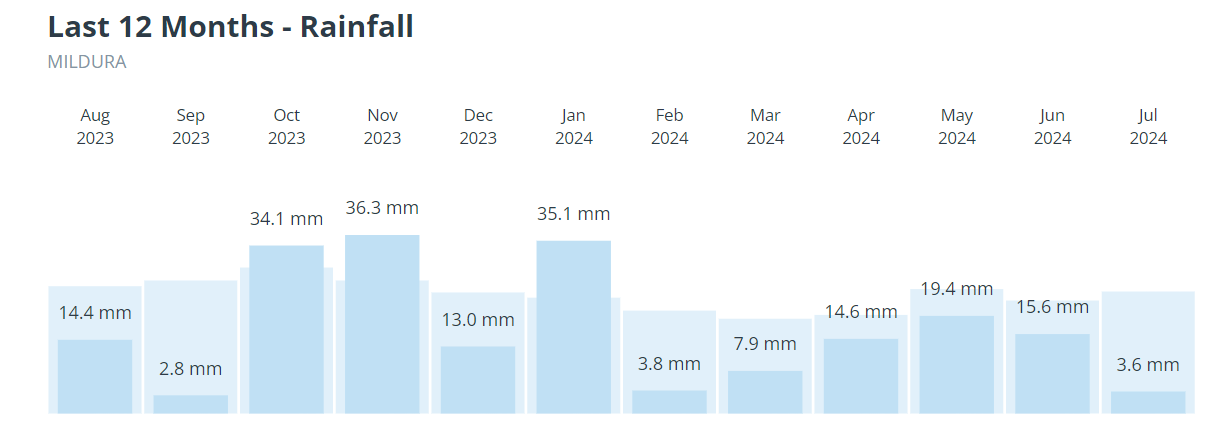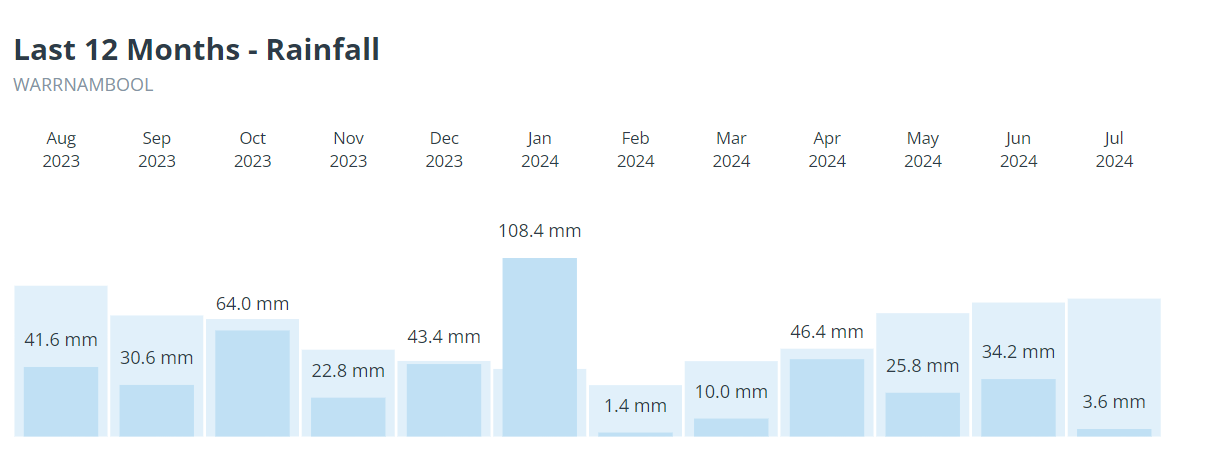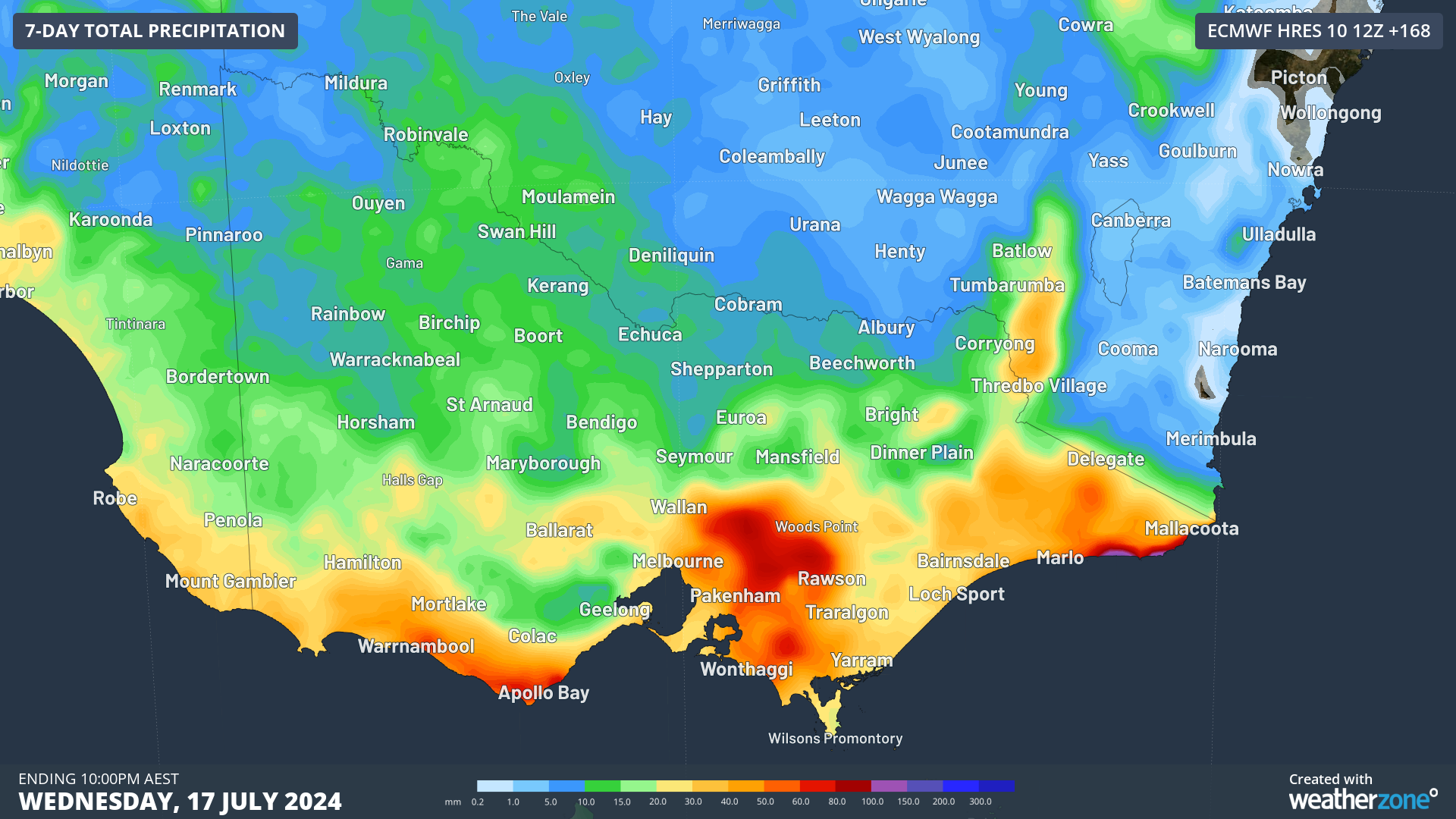Any rain is good rain in the Mallee
Anthony Sharwood
Just look at that beautiful rainband crossing northwestern Victoria this Thursday afternoon.
No doubt locals wish they could slow it down, but after a desperately dry first half of 2024, any rain is good rain in the Mallee and nearby areas.

With a population exceeding 32,000, Mildura is by far the largest city on the Murray (on either the NSW or Vic side of the river) between Albury-Wodonga and the SA border.
Up until 5 pm Thursday, Mildura has received 7.8 mm of rain. That's by no means a huge amount but it is still the heaviest fall in winter 2024 to date, so will be very welcome.
Take a look at Mildura's graph of rainfall over the last 12 months. The picture in 2024 to date is grim. Like most of Victoria, Mildura has endured rainfall deficiencies to date this year.

Mildura has a modest average annual rainfall of just 285.9 mm. Unlike many of Australia’s dry or arid places, its rain tends to be very evenly distributed throughout the year. For example the driest month is March (18.9 mm) while the wettest is October (29.3 mm).
This year, every month bar January has seen rainfall well below average. The pattern has been extremely similar in southwest Victoria, as you can see on the graph below for the coastal city of Warrnambool, about 500 km south of Mildura.

The good news for Warrnambool is that showery weather will settle in for at least the next five or six days. Meanwhile in Mildura, the rain will mostly dry up, as the chart below shows.

The chart indicates total rainfall accumulation across Victoria by next Wednesday evening. As you can see, southern, eastern and mountain districts are in for a good soaking as the coming Tasman low pressure system funnels moisture onshore.
East Gippsland could even see some potentially hazardous rainfall totals – although the news is good for Mt Baw Baw, the only ski resort in the Gippsland region, which could see its heaviest snowfalls in many years early next week if temperatures stay cold enough. This appears likely at this stage.
Note to media: You are welcome to republish text from the above news article as direct quotes from Weatherzone. When doing so, please reference www.weatherzone.com.au in the credit.